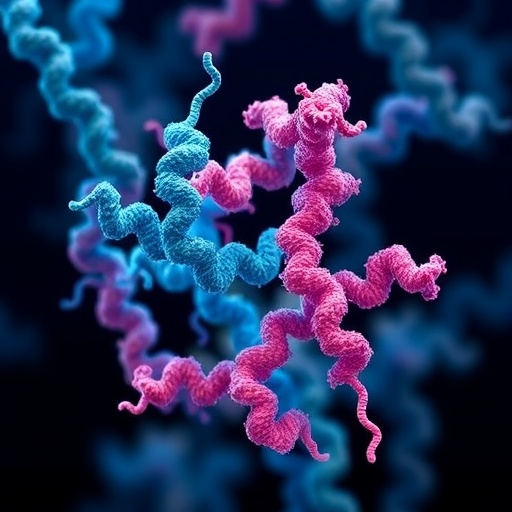CAMBRIDGE, MA — The field of protein research has been significantly transformed by the advent of machine learning techniques, particularly large language models (LLMs). Over the last few years, these models have been employed to predict the structure and function of proteins—key molecules that drive biological processes. The implications of such models extend far beyond basic science; they have become instrumental in identifying potential drug targets and in the design of therapeutic antibodies, which are crucial for treating various diseases.
Despite their impressive accuracy, a major drawback of LLM-based protein models is their opacity. Researchers have often found themselves in a position where the output of these models is verifiable in terms of accuracy but shrouded in mystery when it comes to the reasoning processes behind their predictions. This lack of interpretability has been a significant barrier for scientists aiming to harness these models for practical applications. The finer details of how the models arrive at their conclusions—what specific features of a protein they focus on, and how these features affect the prediction’s accuracy—have always remained elusive.
In light of this challenge, a groundbreaking study from the Massachusetts Institute of Technology (MIT) has emerged, shedding light on the workings of protein language models. Directed by Bonnie Berger, a prominent mathematician and head of the Computation and Biology group at MIT’s Computer Science and Artificial Intelligence Laboratory, this research utilizes an innovative technique that provides insight into the features considered by these models when making predictions. This investigation into the inner workings of protein language models is crucial not only for the development of better tools for biologists but also for enhancing model explainability.
The team, led by MIT graduate student Onkar Gujral, employed a sparse autoencoder—a specialized algorithm that has shown promise in enhancing model interpretability. Sparse autoencoders expand the representation of proteins within a neural network by increasing the number of activation nodes from a small number to tens of thousands. This expansion allows the characteristics of different proteins to be represented more distinctly, facilitating clearer interpretations of which features are contributing to the model’s predictions.
The significance of this new approach goes beyond abstract academic interest; it has immediate implications for the practical use of protein language models. When proteins are represented with a constrained number of nodes, information tends to get intertwined, resulting in a compressed representation that obfuscates the understanding of what features each node encodes. This newly developed technique, however, allows researchers to spread out that information across an expanded neural network, creating a sparse representation that is inherently more interpretable.
The research team did not stop at merely adjusting the neural network’s architecture. They took the novel step of employing an AI assistant named Claude to analyze the resultant sparse representations. This AI tool assessed the relationship between these representations and known protein features such as molecular functions, families, and cellular locations. Through this analysis, the AI was able to provide meaningful narratives about which nodes correspond to specific biological features, thereby transforming the raw data into understandable insights.
For example, Claude could articulate that a certain node is linked to proteins involved in transporting ions or amino acids across cell membranes. Such clarity in finding biological relevance in the model’s predictions could revolutionize how researchers utilize protein language models. By gaining insights into which features are essential, researchers could optimize how they formulate input data, thereby fine-tuning the predictions for specific applications.
The implications of this research extend into realms such as vaccine and drug development. As demonstrated in a previous study by Berger and her colleagues, protein language models can predict which sections of viral surface proteins are less likely to mutate, thus facilitating the identification of vaccine targets against viruses like HIV and SARS-CoV-2. By understanding the internal mechanisms of these models, the current study can improve their accuracy and reliability, leading to faster breakthroughs in treatments and preventive measures.
The study not only provides a clear framework for understanding the features that protein language models emphasize but also opens up avenues for future research. The ability to interpret the decisions made by models could eventually enable biologists to encounter new biological knowledge, previously hidden within layers of intricate data. As these models evolve, the potential exists for researchers to derive entirely novel biological insights that could reshape our understanding of proteins and their functions.
Ultimately, the goal of interpreting these protein language models transcends technical achievement; it points toward a future where molecular biology can benefit from the significant advances in computational power and methods. By unveiling the black box surrounding protein predictions, researchers could streamline the development of new therapeutics, expand the frontiers of vaccine development, and address a myriad of medical challenges. As protein language models become increasingly potent in their capabilities, the excitement surrounding their applications continues to grow.
The scholarly community can eagerly anticipate how this groundbreaking work will refine and redefine what is possible in protein research. With researchers like Bonnie Berger and her team leading the charge, the future of drug design and vaccine development stands to gain immensely from clearer, more interpretable models. By drawing back the curtain on the computational processes that drive these models, this study lays the groundwork for making protein research more accessible and applicable to real-world challenges.
In conclusion, the journey of understanding protein language models reflects a broader narrative in science—one where the fusion of computational techniques and traditional biological research is paving the way for groundbreaking discoveries. As researchers continue to explore these advanced methods, the benefits will ripple through various domains, ultimately enhancing human health and knowledge.
Subject of Research: Protein language models and interpretability
Article Title: Sparse autoencoders uncover biologically interpretable features in protein language model representations
News Publication Date: 22-Aug-2025
Web References: 10.1073/pnas.2506316122
References: DOI: 10.1073/pnas.2506316122
Image Credits: None




